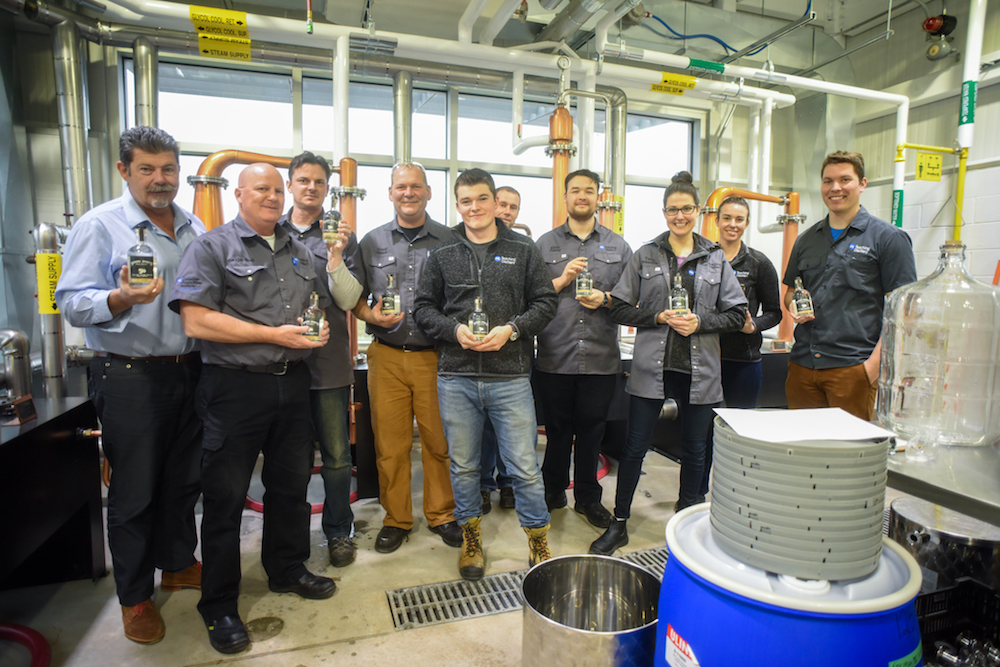
School spirit is so strong at Niagara College, you can now find it in a bottle.
On Wednesday, the College’s Teaching Distillery made history by releasing its inaugural product: Eau-de-vie de Fruits, Fruit Spirit.
Its release marks many ‘firsts’ for the pre-emptive College, which launched Canada’s first postsecondary Artisan Distilling program in September, housed in its on-campus Teaching Distillery – also the first of its kind in the country. The highly anticipated product is the first to bear the College’s new “School Spirits Small Batch” label.
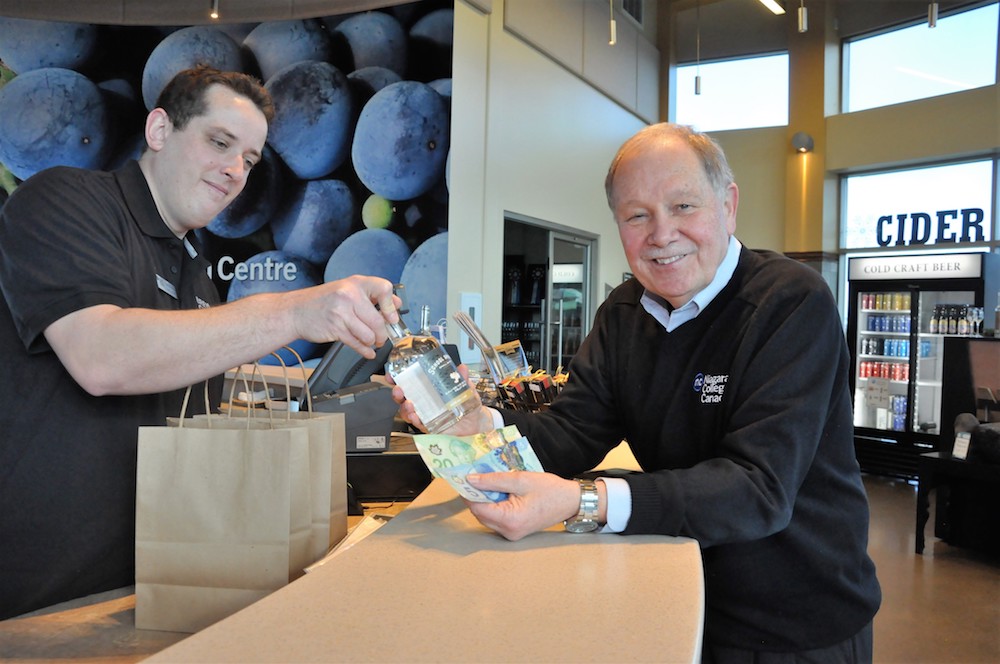
“It’s a historic day for us as we release Canada’s first student-made distilled product,” said Steve Gill, general manager of NC’s learning enterprises. “As the first product from our Teaching Distillery, Fruit Spirit rounds out our portfolio of wine, cider, beer and spirits at Niagara College’s learning enterprises.”
The first class of 16 Artisan Distilling students began working the spirit just days after beginning their studies. NC’s head distiller David Dickson noted that it was made by using pressed Gamay wine grapes from the College’s Teaching Winery.
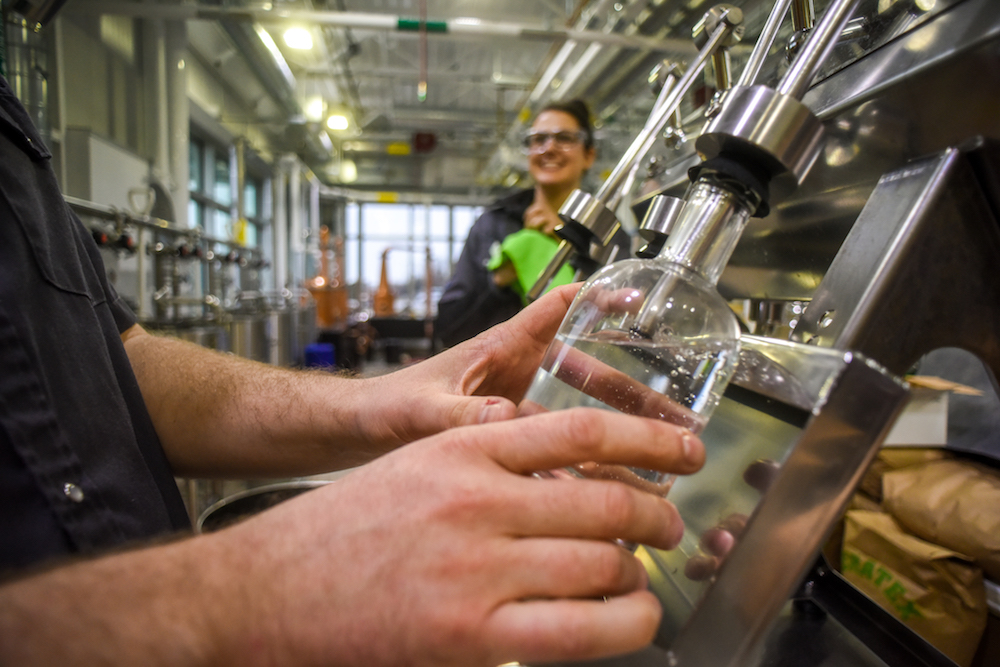
“Using Gamay from our Teaching Winery was a nice partnership that allowed the class to hit the ground running and we started mashing and fermenting simultaneously,” said Dickson. “Sourcing wine grapes for our first distilled product also celebrates Niagara as a wine-producing region.”
Dickson noted that although the spirit started as a single batch of wine, it was produced using single, double and triple distillation, achieving a different character with each distillation.
“It’s the students who made this product and I’m really happy with it,” said Dickson.
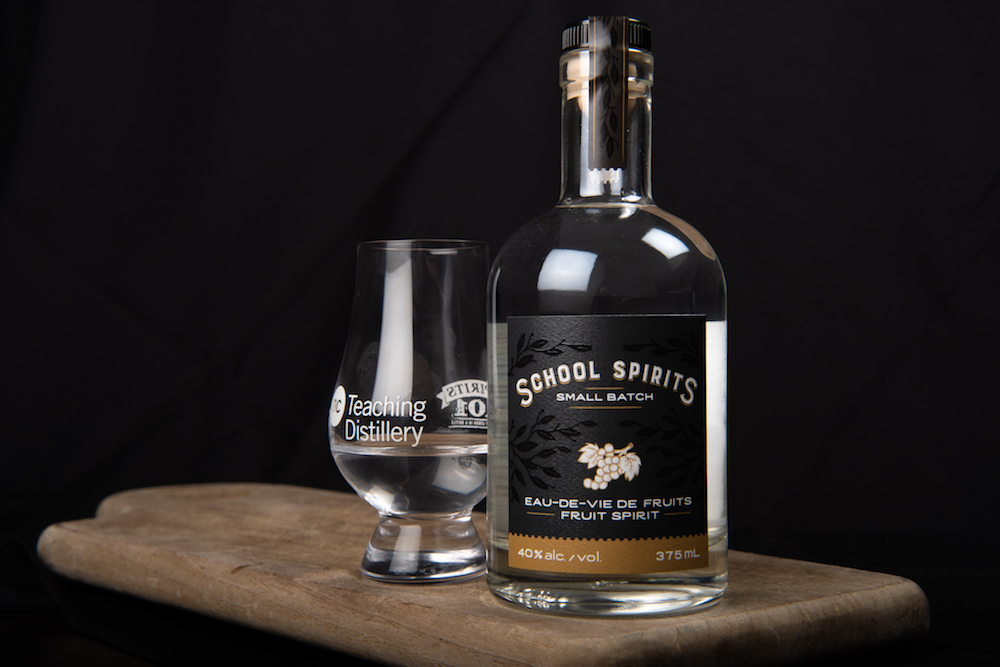
Student Michael McTavish values the learning experience he gained by creating the product in class. “It was very interesting to see how the flavour remained true to the wine we started with but evolved during the distilling process to get to where we are,” said McTavish. “I think this first product is really good and it’s exciting to think it will get better from here.”
Releasing the product was “incredibly exciting” for McTavish, who came to NC from Ottawa to study Artisan Distilling with dreams of producing the “best whisky possible” someday. “I wake up every day with excitement about what we’re going to do next,” said McTavish.
Dickson noted that the product’s grape-forward flavours – described as “fruity, fresh, and floral” – are sure to be a hit with wine lovers as an after-dinner drink. While he recommends serving it straight with a little water to release the aromatics, it could also be a wonderful ingredient for cocktails – particularly those containing citrus.
Fruit Spirit is available at NC’s Wine Visitor + Education Centre (135 Taylor Rd, Niagara-on-the-Lake, ON) while supplies last, priced at $25 a 375-ml bottle. Proceeds from sales support student learning.
— Information and photos provided by Niagara College
Brock’s VineAlert program saved
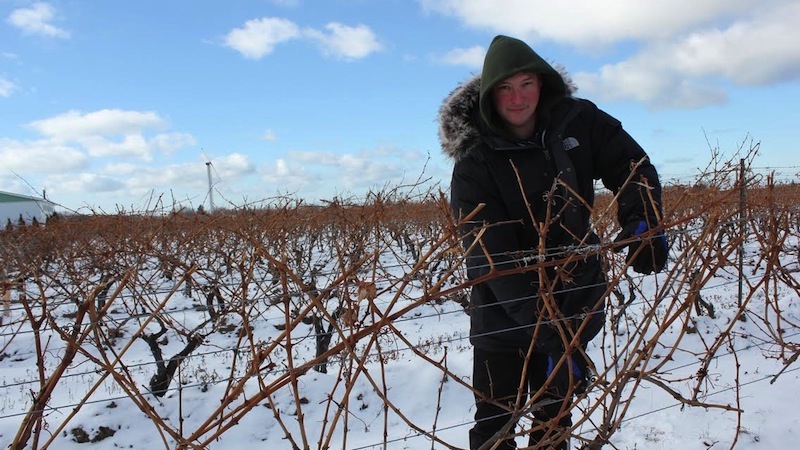
On the cusp of some of the coldest weather this winter heading straight for Niagara this weekend, a crucial program that allows grape growers to receive warnings of potential grape vine damage has been saved.
With the Brock-designed VineAlert program starting the season without funding, the Grape Growers of Ontario partnered with Brock’s Cool Climate Oenology and Viticulture Institute (CCOVI), to fund the project this week through the 2019 season.
New vine-health data is being posted for all regions and will continue through the season. You can see the updates on the website here or sign up for alerts.
Jim Willwerth (top photo and below), CCOVI’s senior scientist in viticulture, who is behind the science of the program “sent a message out to VineAlert users to make them aware why we were not posting data.”
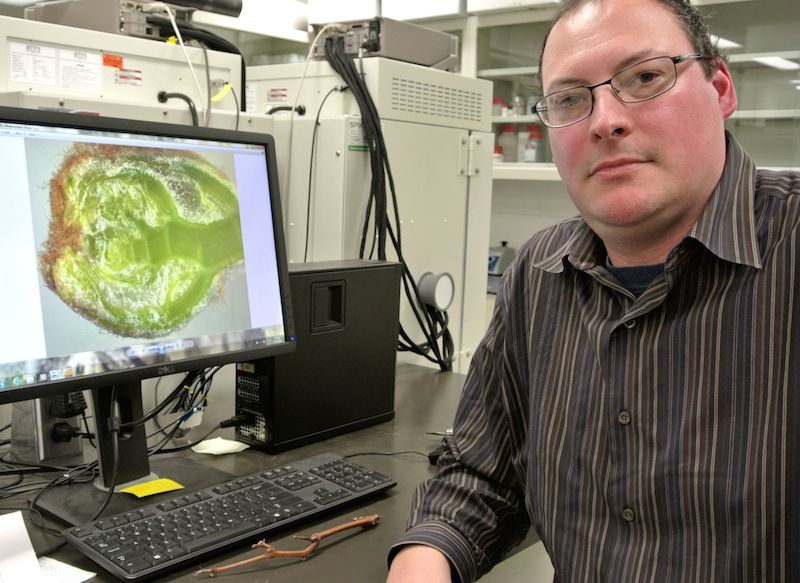
The Grape Growers of Ontario (GGO) came through with the needed funding and VineAlert is currently operating to help grape growers. “We are continuing to work with the industry to create a long-term, sustainable strategy for the VineAlert program,” said Willwerth.
The grape growers’ CEO Debbie Zimmerman told Wines In Niagara that the program provides important information for the wine industry.
“VineAlert is a critical tool for Ontario’s grape growers in managing winter injury by monitoring bud cold hardiness throughout the dormant period,” she said. “The Grape Growers of Ontario were able to assist Brock University’s Cool Climate Oenology and Viticulture Institute (CCOVI) with funding of the program for the 2018-19 season while they pursue a sustainable funding method for the future.”
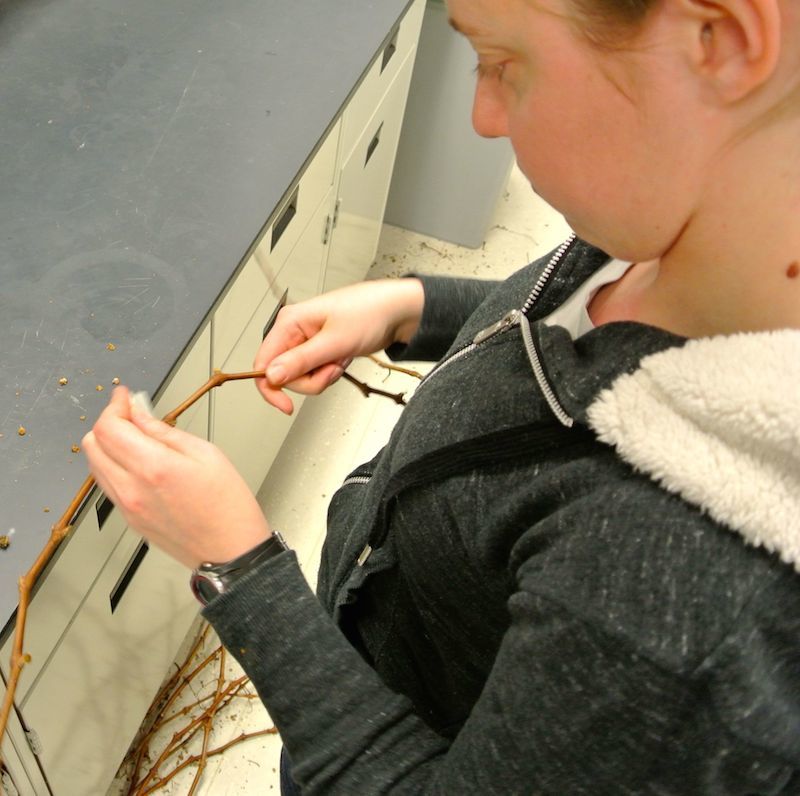
As for the coming cold front, which could see temperatures drop to -20 C in some areas, Willwerth said “we have been sampling across all appellations this week to ensure data is available and up-to-date before the coldest weather of the season arrives and therefore more data will be posted as the week goes on. It is extremely satisfying work and great to have strong industry-university partnerships like this so we provide this type of program to help our grape growers and wineries. You can expect to see more data and alerts as the winter progresses.”
The grape bud hardiness alerts are a crucial and important warning system that tells growers when temperatures are approaching levels that can be harmful to grape vines (-20 C and colder), are followed by bud survival rates, a grim tally of predicted death-rates for buds across all appellations in Ontario. It’s an indication of the crop to come, but the not the definitive answer for the quality of the final wines — that’s determined by the overall growing season.
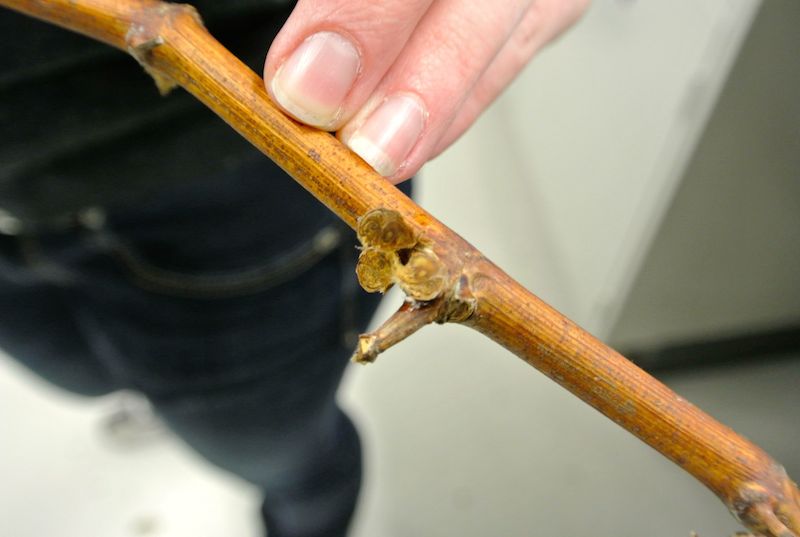
The university collects samples and, with the precision of a surgeon, students methodically slice open samples from vines taken in key vineyards in key appellations. Live buds are put under a microscope to calculate the latest survival rates. “We’re really growing on the edge here,” said Willwerth in a previous story on the program during the polar vortex in 2014.
For Ontario grape growers, the extremely cold, back-to-back winters of 2014 and 2015 were uncharted territory. The closest anyone can remember are the 2003 and 2005 vintages, both of which resulted in short crops and limited VQA wines for consumers.
No one growing grapes in Ontario wants to see more winters like that.
But at least now there will be fair warning with Brock’s VineAlert program saved.
Severe cold weather warning
The following is an alert from CCOVI regarding grapevine cold hardiness and the low temperatures expected over the weekend in regions across Ontario. The forecasts indicate that this weather system will be bringing cold temperatures along with wind speeds estimated to be >25 km/hr. Under these conditions there will NOT be an inversion layer of warm air so operation of wind machines will not be of any value. Also, there is high potential for damage to machines themselves under high winds or gust conditions.
Grape buds may sustain injury if temperatures reach critical temperatures so it is important to MONITOR VINEYARD TEMPERATURES AND WIND SPEEDS in order to be prepared to use wind machines if required under the proper conditions.
From our latest cold hardiness testing, the most sensitive cultivars (Merlot, Sauvignon blanc, Syrah) may sustain some freeze damage when temperatures drop below -18 C. THE LATEST COLD HARDINESS DATA can be viewed here.
Start-up temperatures for wind machines should be adjusted to account for what we are currently seeing with vine cold hardiness. For optimal use of wind machines, it is suggested that the start-up temperatures be set at 2 to 3 degrees warmer than temperatures at which injury might occur. It is also important to monitor wind speeds along with temperatures.
Bud survival assessments will be done over the upcoming weeks to determine any impact of this weather on primary bud survival.
Please note: Cold hardiness ratings are estimates only and the information provided is for general guidance. Cold hardiness ratings are site specific and may vary based on vine health, viticulture practices and site conditions, among other factors. Any decisions for protection strategies should be based on your own information and site conditions.






Comment here